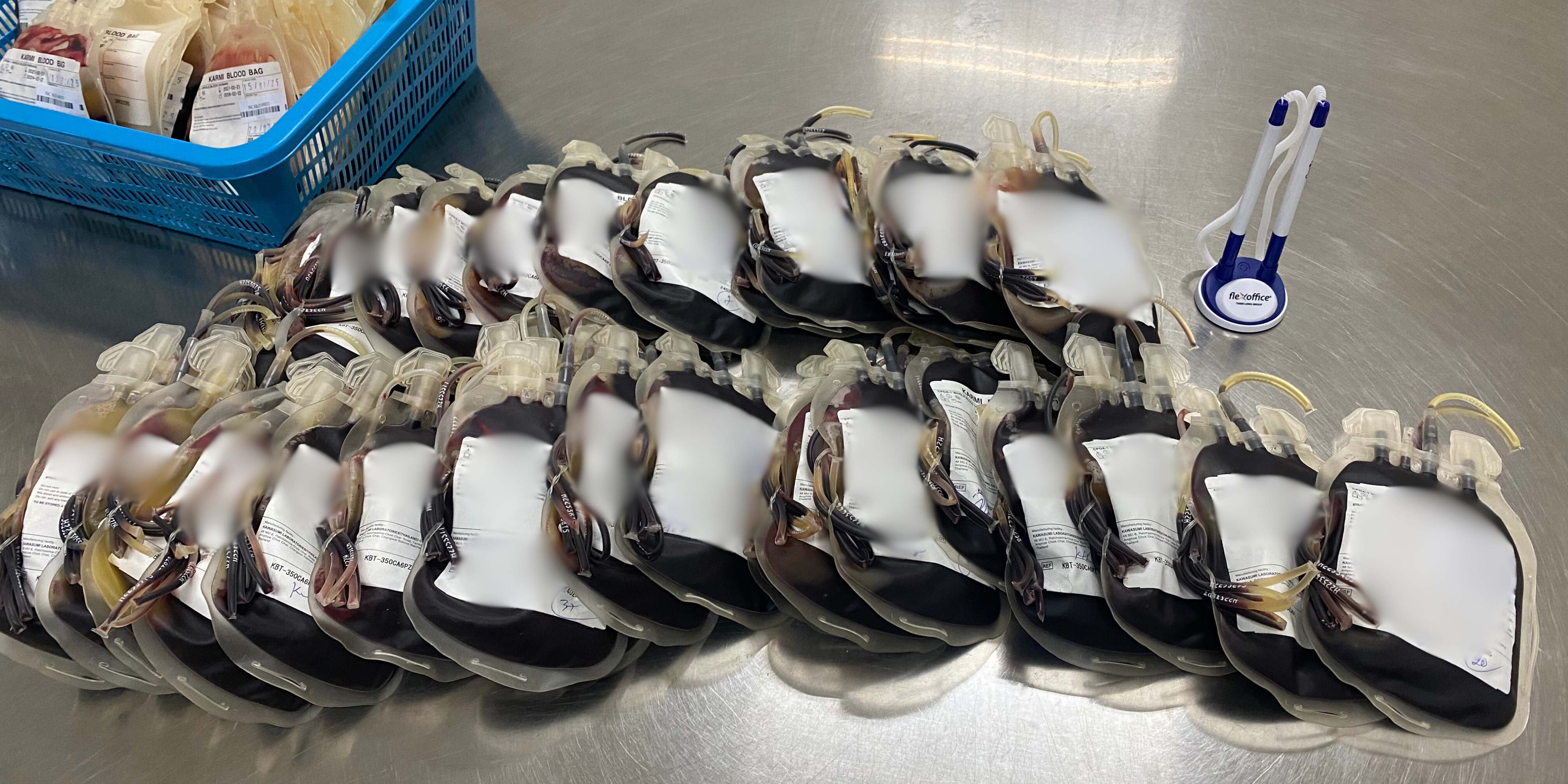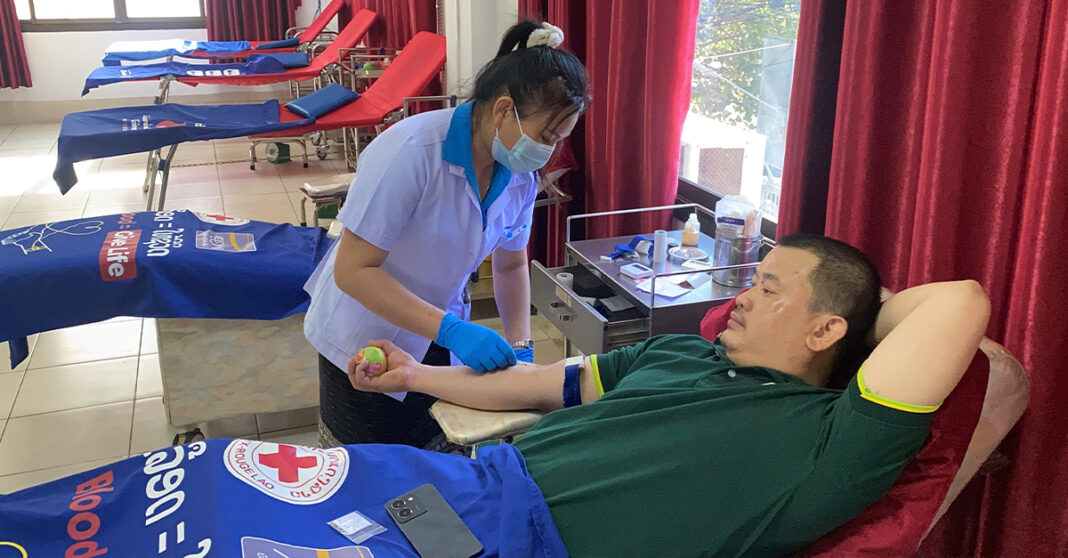Laos has long been grappling with a blood donation shortage. In 2024, several provincial branches of the Lao Red Cross failed to meet their collection targets.
This shortfall has been attributed to factors such as the economic crisis, natural disasters, and misconceptions about blood donation.
Chanthala Souksakhone, head of the National Blood Transfusion Center under the Lao Red Cross, confirmed on 15 January that only five provinces—Vientiane Capital, Luang Prabang, Xayabouly, Sekong, and Attapeu—met their goals.
The Lao Red Cross collected 71,297 bags of blood in 2024, falling short of the target of 78,000. In comparison, the organization exceeded its 2023 goal, collecting 73,023 bags.
“This year [2025], we have an even higher target to collect at least 80,400 blood bags. The goal will continue to rise each year. By 2030, we need to reach as high as 120,000 bags.”
Each donor can give only one bag of blood, containing between 350 and 450 milliliters. However, meeting daily demand remains a significant challenge. The Vientiane Capital headquarters alone requires 200 bags daily, while provincial branches must collect at least 300 bags each day.

“Currently, we’re only managing to collect 20-30 bags daily,” he noted.
The main challenge to reaching blood donation targets are a limited number of donors, economic instability, weather conditions, and misconceptions about blood donation. Chanthala explained that the target audience—teenagers aged 17 and older—is small, and many college students are not interested in donating.
“I feel like our advertisement strategies aren’t very effective. The format and messaging fail to capture a wide audience— it’s not colorful enough. Not to mention, many people still have misconceptions and are afraid of donating blood,” he explained.
Many people still believe that blood donation is “unnecessary” and “outside their concern,” the official noted.
In addition to the lack of target donors and misconceptions, weather conditions also hinder the operation.
“Last year’s floods made it incredibly difficult for us to organize and carry out blood donation drives,” Chanthala said, noting that limited vehicles and a shortage of health experts have further hindered efforts.

“We not only lack enough staff, but we also face a shortage of resources to carry out the operations,” he added. “We cannot proceed without being fully prepared, as it’s crucial to ensure the safety of both the blood donors and the blood they donate.”
Looking ahead, the Lao Red Cross plans to increase awareness through social media, provide accurate information, and develop more effective campaigns to engage potential donors, particularly teenagers.
“The organization will leverage social media to share accurate information about blood donations, run advertisements, and develop strategies to engage target donors, especially teenagers over the age of 17,” Chanthala said.
To address the staffing shortage, the Lao Red Cross will revamp its reward system to motivate employees and boost morale. The organization is also focused on increasing recruitment efforts to ensure operations run smoothly.
This isn’t the first time the Lao Red Cross has made a call for assistance.
On 10 January, local media reported that the organization issued an urgent appeal for blood donors, stating that hospitals across the country are facing a critical shortage and having to delay essential surgeries. The rise in road accident victims has further intensified the demand for blood.
Over the past five years, the National Blood Transfusion Centre has collected a total of 251,564 bags of blood, surpassing the target of 249,700 bags for that period.



